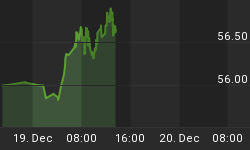The "dumb money" continues to remain bullish while the "smart money" is bearish, but less so than the previous week. Prices on the SP500 broke out on the expectation of QE3, but now that the actual event has come and gone 4 weeks ago, prices have stagnated. I believe that the current market environment is not the recipe for a sustainable upward price move.
The "Dumb Money" indicator (see figure 1) looks for extremes in the data from 4 different groups of investors who historically have been wrong on the market: 1) Investors Intelligence; 2) MarketVane; 3) American Association of Individual Investors; and 4) the put call ratio. This indicator is bearish, and just above the extremely bullish level.
Figure 1. "Dumb Money"/ weekly
Figure 2 is a weekly chart of the SP500 with the InsiderScore "entire market" value in the lower panel. From the InsiderScore weekly report: "Insider trading volume is seasonally light across the market as most companies have closed trading windows, effectively prohibiting insiders from buying or selling until after the release of Q3'12 earnings. This past week, most sectors experienced sharp reductions in trading volume, resulting in either weak Sell Bias or Neutral sentiment readings. Overall, sellers outnumbered buyers by a 3:2 margin."
Figure 2. InsiderScore "Entire Market" value/ weekly
Figure 3 is a weekly chart of the SP500. The indicator in the lower panel measures all the assets in the Rydex bullish oriented equity funds divided by the sum of assets in the bullish oriented equity funds plus the assets in the bearish oriented equity funds. When the indicator is green, the value is low and there is fear in the market; this is where market bottoms are forged. When the indicator is red, there is complacency in the market. There are too many bulls and this is when market advances stall. Currently, the value of the indicator is 71.82%. Values less than 50% are associated with market bottoms. Values greater than 58% are associated with market tops. It should be noted that the market topped out in 2011 with this indicator between 70% and 72%.
Figure 3. Rydex Total Bull v. Total Bear/ weekly
TheTechnicalTake offers a FREE e-newsletter: HERE
Visit TheTechnicalTake website: HERE















